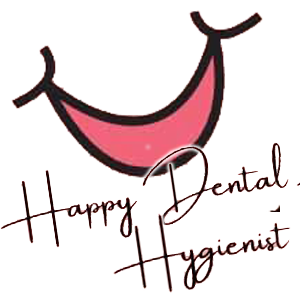As dental professionals, we’ve all been there: a patient sits in our chair, expecting their teeth to be cleaned, polished, and left gleaming. The unspoken rule? Remove the tartar, and the session is a success. But here’s the question we need to ask ourselves: is this enough? Are we truly helping our patients achieve long-term oral health, or are we merely giving them a temporary cosmetic fix?
It’s time for a mindset shift. A good oral hygiene session should no longer be measured by how clean a patient’s teeth look at the end of their appointment but by the progress made in empowering them to maintain their oral health daily. Let’s explore how we can elevate these sessions to focus on what truly matters: patient care and collaboration.
Redefining the “Good” Oral Hygiene Session
When asked, “What makes an oral hygiene session successful?” many dental professionals might respond with: “When all the tartar, biofilm, and staining has been removed.” While this is undeniably important, it’s only part of the picture. True oral health doesn’t happen during a biannual visit; it’s the result of what happens between those visits—the daily care patients provide for themselves.
So, what is a truly successful session? It’s one where patients leave your chair not just with cleaner teeth but with the knowledge, motivation, and tools to care for their oral health every day. It’s about taking the time to coach them, step by step, on proper techniques and building their confidence to maintain these habits long-term.
This shift requires us to look beyond our professional expertise and embrace our roles as educators and motivators. It’s not something that can be done in a quick five-minute conversation at the end of a session. Instead, it demands dedicated time and attention to patient education as the cornerstone of our care.
Why Coaching Matters
Imagine this: a patient returns to your practice with bleeding gums and plaque accumulation despite regular cleanings. You clean their teeth again, but the underlying issue persists. Why? Because they haven’t mastered the daily care needed to break the cycle.
Taking patients “by the hand” and coaching them through proper oral hygiene practices is the solution. This means:
- 1. Demonstrating Techniques: Show them how to use tools like a toothbrush and interdental brushes correctly. Let them practice under your guidance.
- 2. Using Visual Aids: Photos of their oral condition, intraoral cameras, or scanners can make invisible issues visible, helping them understand the importance of their care.
- 3. Providing Feedback: Tools like the BOB-App, which records an interdental bleeding index and generates a scoring system, offer tangible progress markers. Patients can see improvement over time, which is highly motivating.
By investing this time, we’re not just treating symptoms; we’re addressing the root cause. And in doing so, we’re empowering our patients to take charge of their oral health.
Practical Strategies for Success
1. Embrace the iTOP Philosophy
The iTOP (Individually Trained Oral Prophylaxis) filosophy emphasizes personalized instruction and prevention. This method encourages tailoring care to each patient’s needs, taking their current habits and oral health status into account. By working with them closely and regularly revisiting techniques, we build a strong foundation for long-term success.
2. Utilize Motivational Tools
Tools like the BOB-App allow us to make oral hygiene measurable. By tracking the interdental bleeding index and providing a visual mouth map, we can highlight areas needing improvement and celebrate progress. Patients love seeing tangible results, and it strengthens their commitment to daily care.
3. Visualize the Problem—and the Solution
Pictures are worth a thousand words. Intraoral cameras, scanners, and even simple photos of biofilm or plaque can be eye-opening for patients. Showing them “before” and “after” images or demonstrating the impact of biofilm buildup fosters understanding and motivation.
4. Dedicate Time to Education
A thorough hygiene session should include:
– A detailed explanation of the patient’s current oral health status.
– Hands-on training for proper brushing and interdental cleaning.
– A discussion about tools that suit their individual needs (e.g., interdental brushes, floss, sonic toothbrushes).
– Encouragement and feedback tailored to their progress.
This level of care requires time but pays dividends in patient satisfaction and outcomes.
Call to Action: Rethink Your Approach
If you’ve been treating oral hygiene sessions as primarily about cleaning, it’s time to reconsider. Reflect on your own practice:
– Are you spending enough time educating and motivating your patients?
– Do you use tools that make oral health measurable and understandable for them?
– Are you fostering a collaborative approach that empowers patients to daily self care?
By shifting the focus of hygiene sessions from tartar removal to patient-centered care, you’re not just improving oral health outcomes—you’re building trust, loyalty, and a reputation as a leader in prevention.
Conclusion: A Partnership for Long-Term Health
Oral health is not a one-time achievement; it’s an ongoing journey that requires partnership between the dental professional and the patient. When we redefine what a good hygiene session looks like, we unlock the potential for lasting change. Let’s inspire our patients, guide them with care, and set a new standard for modern dentistry.
The next time a patient sits in your chair, remember: the real success lies not in how clean their teeth look when they leave but in how confident and capable they feel in maintaining that cleanliness themselves. Together, we can create a future where oral health is not just managed but truly mastered.



